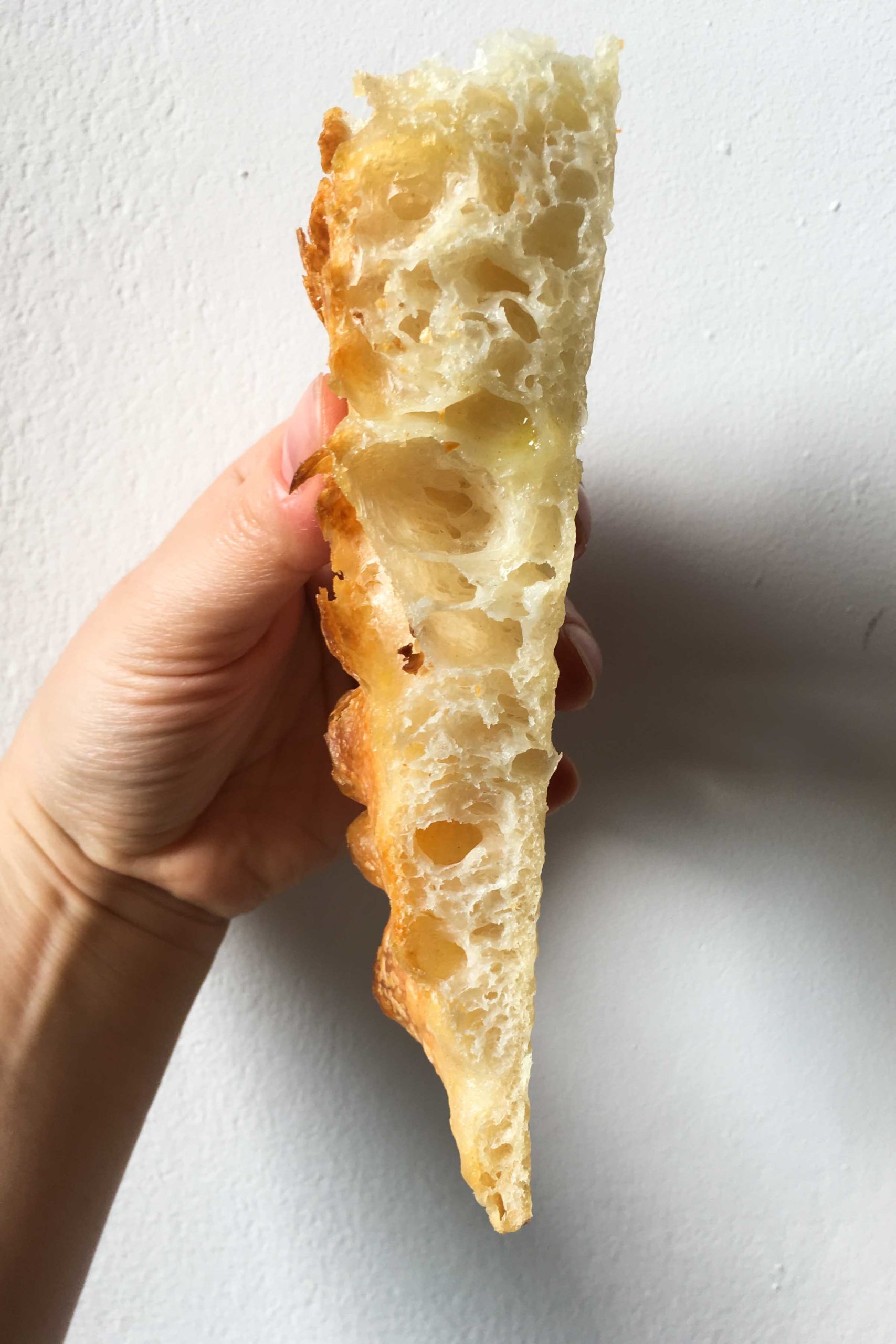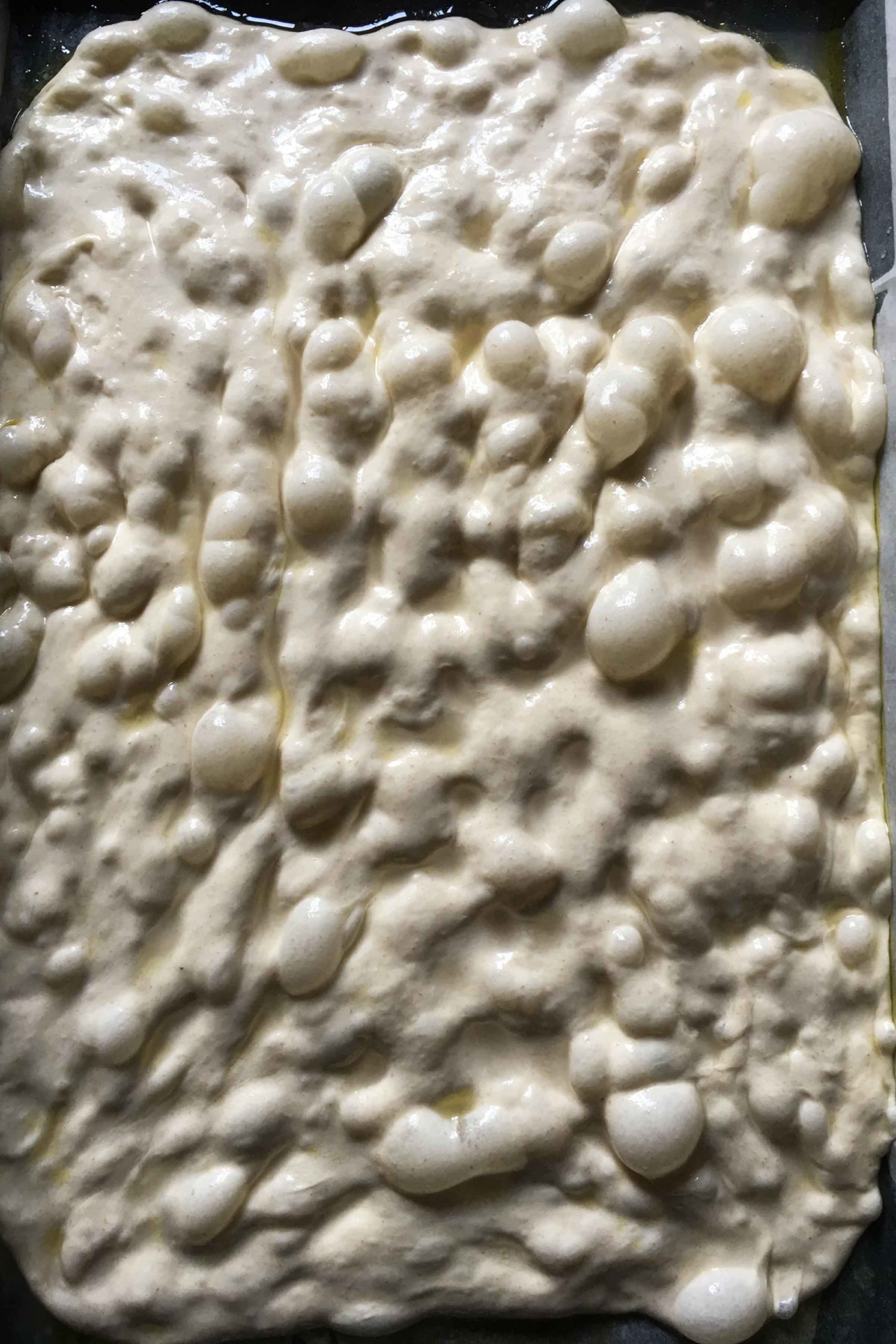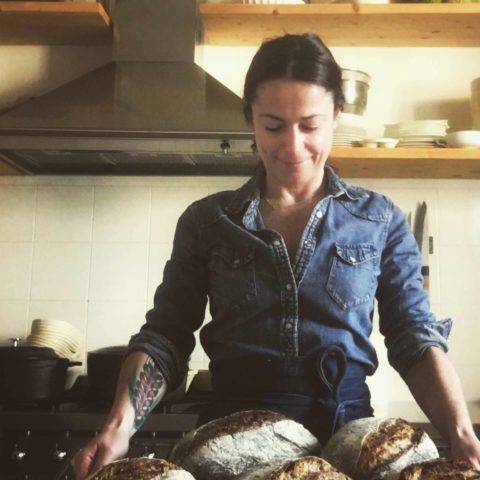
Photos by Laura Lazzaroni.
Since we’re spending so much time at home now, we’ve finally have time to work on things we’ve wanted to do for so long, like learn how to bake bread. Baking has become one of our preferred ways to relax and calm nerves – rather than fixating on the news. It’s also amazing how you can create something so complex and beautiful from a few very simple ingredients; flour, yeast, salt, water, and oil.
We’re always thinking about Italy. One of the breads we wanted to learn to make was really good focaccia.
We asked Laura Lazzaroni to share her recipes and expert advice with us on how to make amazing Italian bread at home. Laura is a journalist, baker, author living in Milan, and the Editor in Chief of the Italian version of Food & Wine. She has worked with many high profile publications and consults for a number of restaurants and bakeries. She graciously agreed to share a few recipes, so keep an eye out for her ciabatta recipe we’ll be sharing next.
We’ll be making the focaccia this week, so you can make it along with us on Instagram stories. If you make Laura’s focaccia, we’d love for you to share it on social media. Be sure to tag @thetasteedit and @lauralazzaroni_ on Instagram.


As Laura explains:
This recipe takes 2 days to make and involves quite a few steps: read through at least a couple times and familiarize yourself with it, making sure you have all the necessary ingredients and equipment.
A word on flours. Italian and U.S. flours are different. They have different granulometry, protein content, gluten strength (I find commercial U.S. bread flours to have a stronger gluten, yielding “tighter” doughs). Based on how much bran is sifted out, there are four types of Italian “grano tenero” or bread flour (00, 0, 1 and 2). Italians also use a lot of Durum wheat flour, for pasta and bread: it’s sold as semolato, semola, semola rimacinata (from coarser to finer). I recommend substituting with a mix of unbleached all-purpose and stoneground white whole-wheat all-purpose flours. Always buy organic, if possible.
HANDMIXED YEASTED FOCACCIA
Ingredients
- 1 kg type 0 flour, (or 70/30% unbleached all-purpose and stoneground white whole-wheat all purpose flour).
- 800 mg water
- 15 g fresh yeast, (or 4.5 gr dry yeast)
- 15 g salt , (fleur del sel)
- 20 g olive oil
- 180 ml lukewarm water
- 2 tbsp olive oil
- 2 tbsp salt , (fleur del sel)
Instructions
- Dissolve yeast in 2tbsp of warm water; let sit for 10 minutes.
- Mix together flour, dissolved yeast, 680ml water, salt and olive oil.
- Start adding water slowly and little by little, until absorbed. If necessary, pour a little, let it pool on the surface, gently pressing down on the dough, let sit for a few minutes and resume mixing. You should mix with the “stretch and fold” technique: wet your fingers, slide your mixing hand under the dough, pull up a flap of dough and fold it over at the center. As you do this, rotate the container: you should fold 4 times per round, and keep folding until the dough starts developing tension. Make sure you keep wetting your fingers as you fold. Stop adding water if dough rips (better not to add it all, if dough won’t take it).
- Let dough rest for 10 minutes
- Transfer the dough to a well-oiled food safe container. Make sure the container holds at least 3 times the dough’s volume, as it will increase by that much during bulk. Fold dough once, by lifting the two opposite edges and folding them over at the center, then put in the fridge for 24hours, covering with Saran wrap or a lid.
- Prepare your brine: for 1Kg flour, 180ml lukewarm water, 2tbsp olive oil, 3 tbsp fleur de sel. Oil 2 thick baking sheets or shallow hotel pans and set aside.
- Dump your dough over a table (smooth wood, marble or steel are the ideal surfaces) and keep a water-filled bowl handy: you will need to wet your fingers as you work the sticky dough. Using a bench scraper, divide the dough in half and round the two halves in balls, by working them up counter-clockwise either with your hands or the bench scraper and using the table surface to build tension.
- Transfer each ball to a baking sheet, cover it and let rise at room temperature for an hour (make sure ambient temperature is warm enough: if not, turn on a burner, or place baking sheets near a radiator – but never in direct contact with them).
- Using the ball of your fingertips gently spread each dough ball on the baking sheet, pushing the gas out as you go, particularly along the edges (if not degassed, they will rise too much during baking): make sure not to poke through the dough. Pour half the brine over the dough, cover and let rise for another hour at room temperature.
- Preheat your oven at 500F, placing a Pyrex or oven safe metal container on the bottom. Pour the rest of the brine over your dough, gently pressing with your fingertips to create dimples, working from top to bottom with both hands at the same time.
- When the oven is hot, pour water in the container on the bottom of the oven (this will create some much-needed steam) and bake your focaccia (either one sheet or both at the time, if oven is big enough), for 20-25 minutes. Ready when golden.
